Two-minute review
Dahua is a big-in-China manufacturer that makes many things and is particularly renowned for its surveillance cameras. Now it’s launching its first gaming monitor, so we were keen to see whether it could make a dent in a mature market – or at least offer a great new value proposition. We suspected the latter, as a primary benefit listed by the company is its “light and cost-effective plastic housing”. Nonetheless, we kept an open mind.
The LM32-E200C comes in three pieces that are assembled with a screwdriver. The wide V-shaped base attaches easily enough, but connecting the panel to the stand uses an unusually intricate design that initially concerned us regarding its weight-bearing capabilities, but thankfully held fast in our testing. However, it could wobble a bit when knocked and note that only tilt adjustment is available.
Connectivity is basic and comes in the form of two HDMI 2.0 ports and two DisplayPorts (1.4). The latter may cause issues with laptop users who mostly use USB-C connectors for DisplayPort nowadays, but this is only really an issue if they want to take advantage of the screen’s maximum refresh rate.
Indeed, the 32-inch, lightly curved (1500R), 1080p panel can push up to 165Hz if you’re using DisplayPort; HDMI is limited to 144Hz. We were keen to test performance, but first impressions were mixed. After booting up, we were quickly reminded that a large, 32-inch screen is not ideal for displaying a Full HD resolution: Windows’ Desktop icons are all oversized and the text that labels them is spidery and ill-defined. We also felt that colours and contrast were washed out but, after tinkering with the OSD settings and switching from Standard to Web mode, both characteristics instantly improved. Ultimately, this size and resolution combination aren't ideal for work unless you’ve poor eyesight and want everything magnified but, even then, you’d be better off with a UHD monitor and then magnifying Windows Desktop, because the results will be much-better defined.
We noted too that spreadsheet work was tricky, as small fonts became difficult to read. Also, doing basic image manipulation in Photoshop was a problem due to the lack of resolution and difficulty in fine lines being displayed as straight (without big steps in them).
Still, we won’t dwell on work performance as this is primarily intended as a multimedia and gaming monitor. When watching multimedia, we were impressed with the colours and, for the most part, contrast. However, we did keep having to fiddle with the monitor’s menu options to get the best results for each media type. Doing this isn’t the simplest task as you need to reach under the monitor and feel for the four stiff, unlabelled buttons and navigate through lengthy on-screen menus each time. While we got used to the navigation, we were still annoyed at how often we needed to access it.
Gaming performance was a mixed bag. The 165Hz refresh rate is certainly smooth but we’re not convinced about the pixel response times. Motion regularly produced a slight smearing effect in fast-and-frantic encounters. There are settings to adjust the pixel response time – which slightly improved matters – but we got quickly tired of constantly doing that.
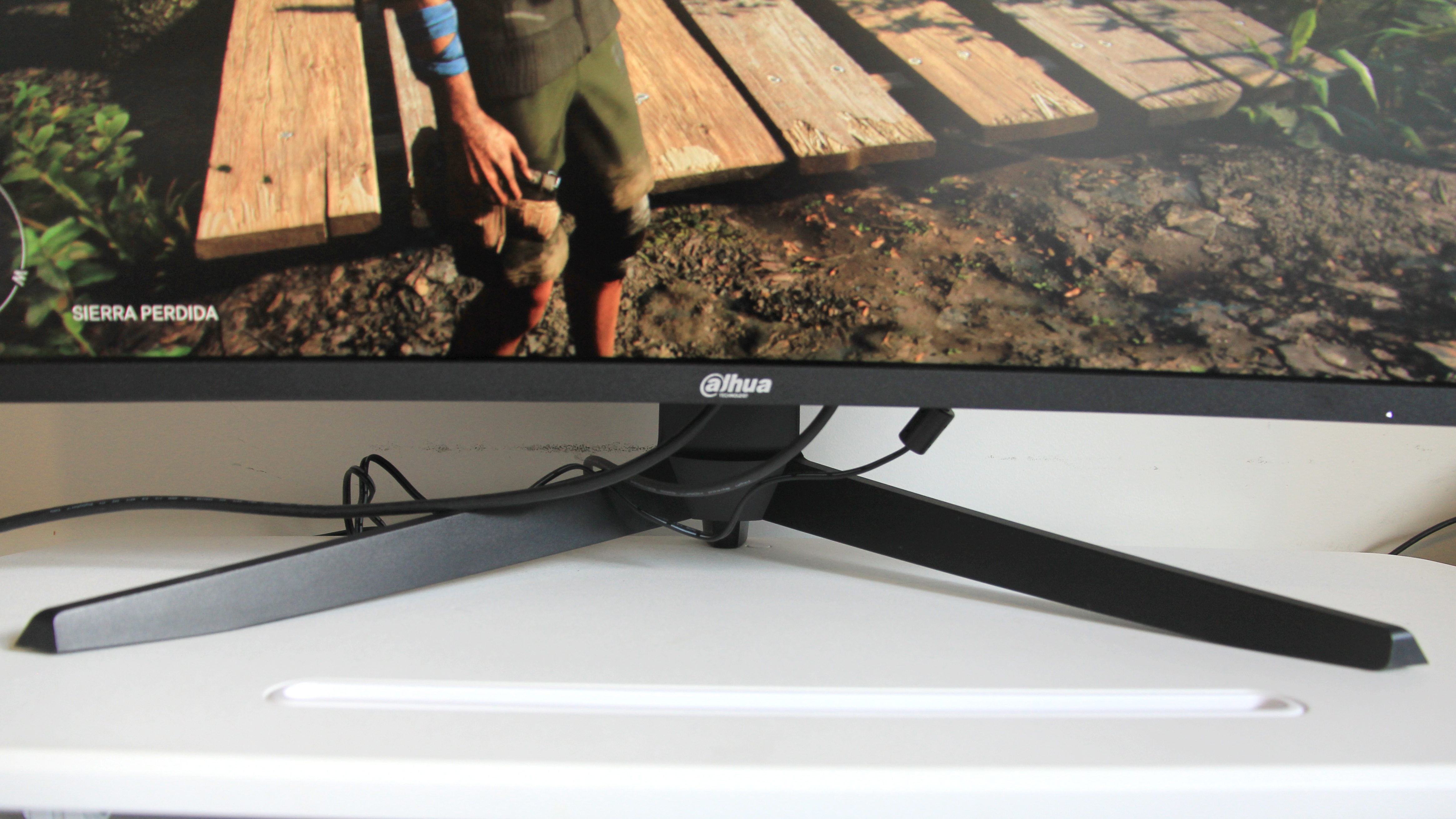
Price and release date
The Dahua LM32-E200C monitor is currently only available in Australia where a AU$100 price drop in February 2022 means it now costs AU$389. That’s roughly on par with similarly specified rivals from ViewSonic, Philips and Samsung.
Design
Dahua says of the LM32-E200C that its design is based upon a “light and cost-effective plastic housing”. While we respect the company’s honesty, this isn’t the language or aesthetics that gamers have become used to. The black plastic bezel and stand aren’t particularly inoffensive and there are two, thin RGB LED strips at the rear… but few people will see them.
The tripod stand also takes up a fair amount of desk space and doesn’t provide the most stable footing – the screen can wobble with a slight knock. There’s no fancy swivel, rotate or height adjustment features either – only up-and-down tilt.
Accessing the input ports can be a little strained because of this, as you’ll likely need to tip the whole monitor onto one of its feet in an effort to reach the downward-facing HDMI and DisplayPort connections at the back on the rear.
The OSD menu system is accessible by some very stiff, old-school buttons to the bottom right of the screen. These are relatively intuitive (assuming you’ve used a four-button monitor-nav system before) but we found we needed to access them way too often to get a decent image and this got tiresome quickly. And compared to rivals which offer apps and joystick-button navigation, the LM32-E200C felt dated.
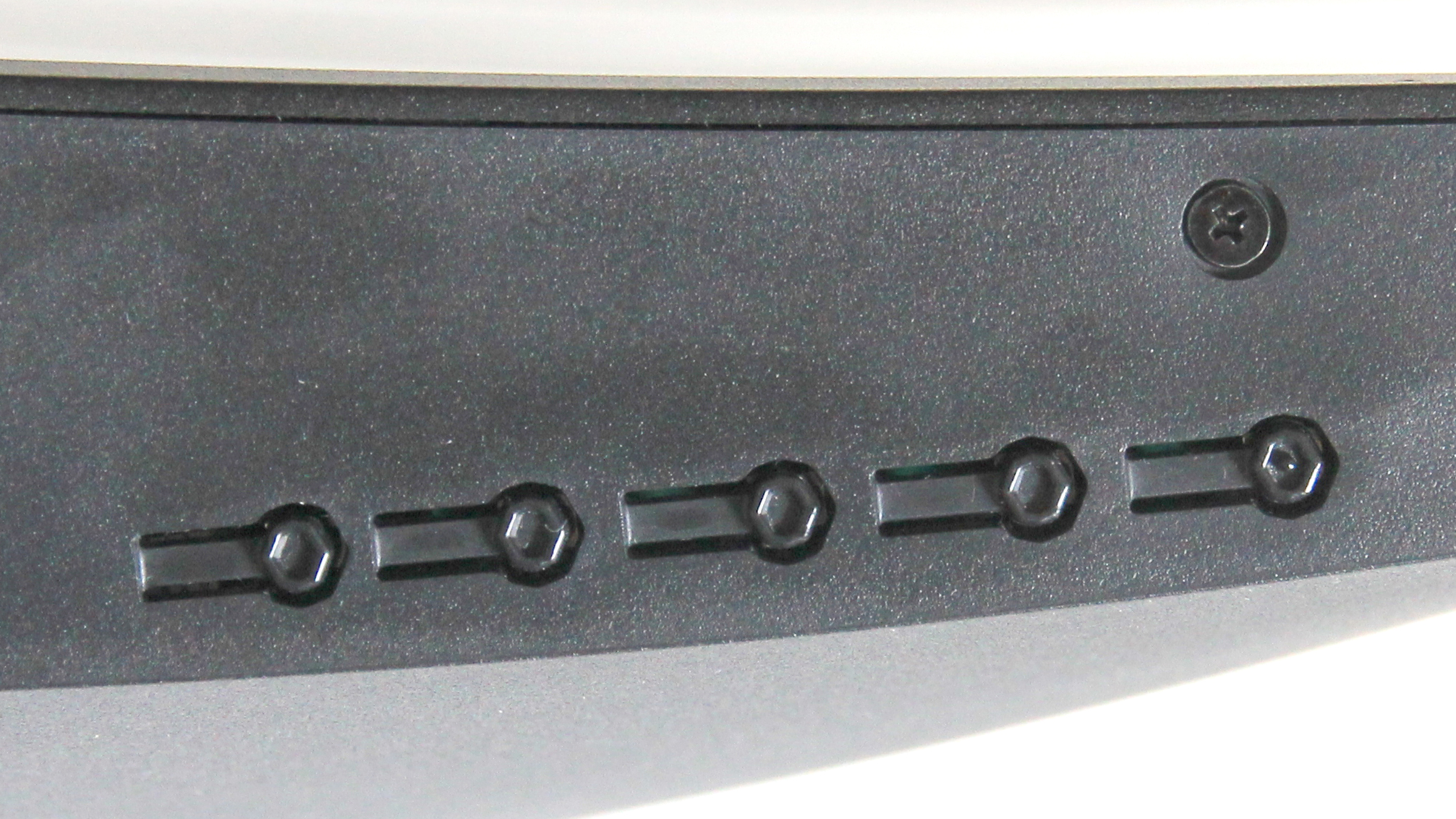
Features
There’s not much in the way of extra features to get excited about with the Dahua LM32-E200C. There are no bells and whistles and beside from the 165Hz refresh rate, all we can point to are the slight curve in the screen (1500R), the 3.5mm audio jack (which is standard on most monitors) and the RGB strips at the rear that can be set to either red, green or blue (or a cycle of all three). That’s your lot.
Connectivity
There are two HDMI 2.0 ports, two DisplayPort 1.4 ports and a 3.5mm audio jack. They are downward facing at the back of the monitor. There’s no USB-C connector or USB hub.
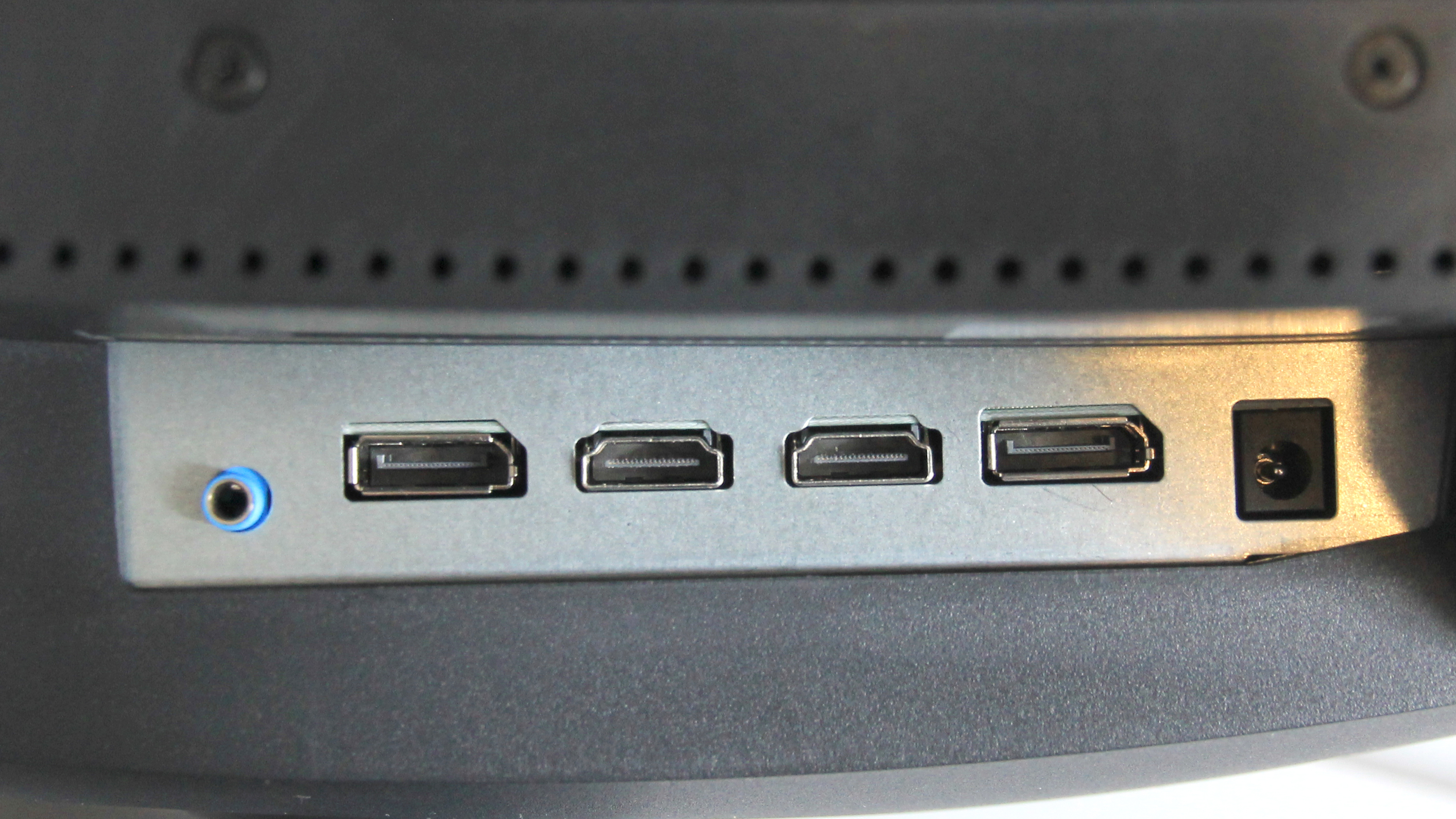
Performance
A 1080p-resolution Windows Desktop will always look stretched on a 32-inch monitor. It’s usable but small fonts get spidery and hard to identify very quickly. This issue is even more pronounced with characters in spreadsheets. We also found you had to zoom in very close to get a good look when performing image manipulation in Photoshop, as making intricate adjustments on a relatively low-res screen became tricky to perceive.
For multimedia, colours are a bit muted compared to rivals. We also noticed stepping in colour gradients and artefacts surrounding some areas of intricate detail. Motion was very smooth for the most part, but small fast-moving high-contrast objects did seem to smear across the screen somewhat. Contrast generally wasn’t great with detail getting lost in both dark and bright areas (meaning enemies can jump out at you when gaming). At only 250 nits, it’s not a particularly bright screen in the first place, so there’s not a great deal that can be done to fix things by fiddling with settings.
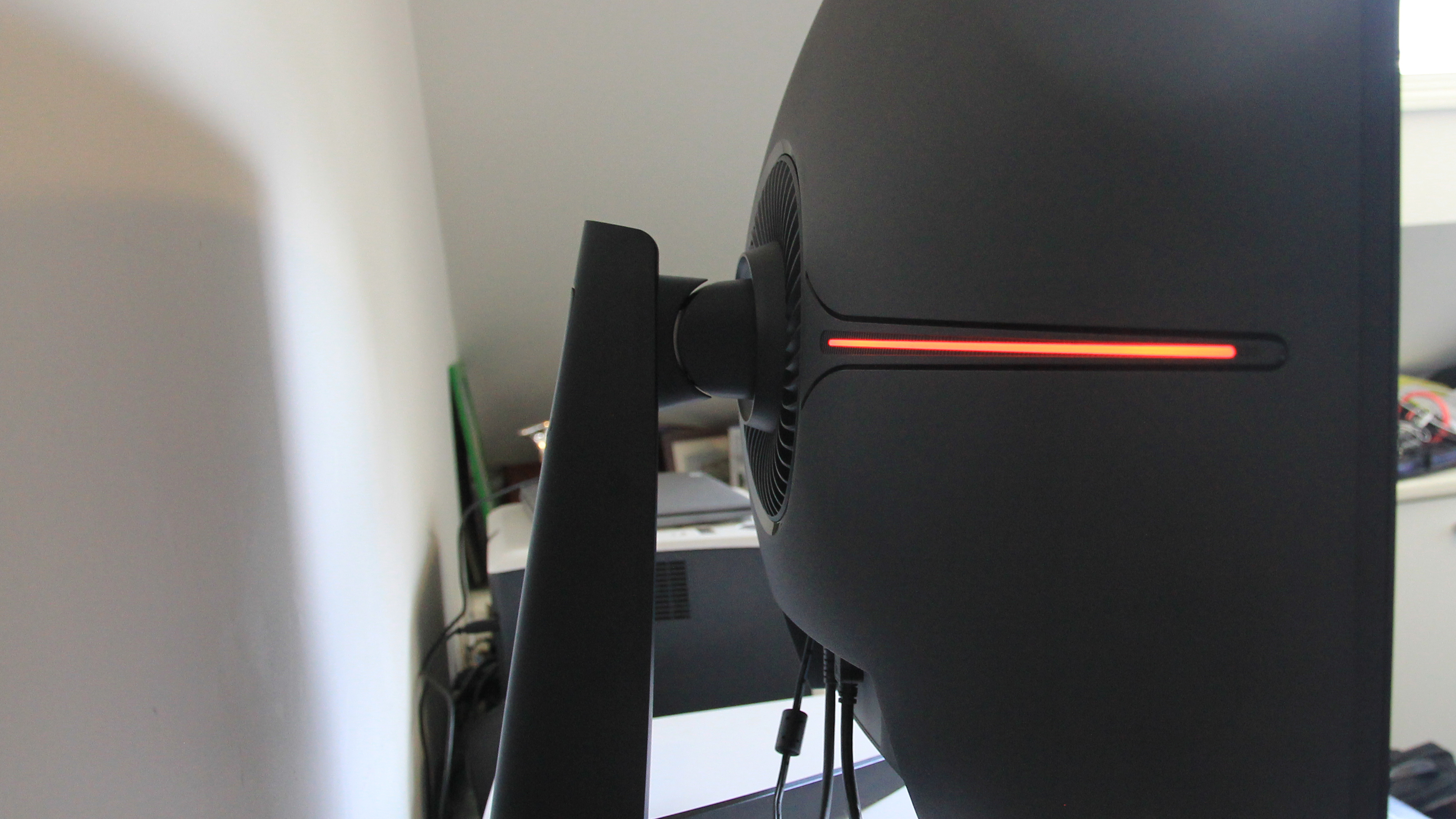
The 165Hz refresh rate can certainly make movement very smooth when gaming, but despite a listed pixel response time of 1ms MPRT, we found fast moving objects quickly lost definition and detail and made us squint a little too much. The OSD allows you to set Pixel Response Time to Off, Low, Medium and High, and although there’s some improvement with the High setting, it’s not much.
We also found that we were regularly cycling through default picture modes and adjustments for every situation we were in. The usual pre-sets of Standard, Game, Movie, Web and Text are all there but, for the first time in ages, we chose different ones depending on what we were doing. Pre-set gaming modes won’t suit everyone either, as each one essentially butchers the image in some way to enhance another aspect. It was hard to find one setting we were comfortable with, and we grew weary of constantly having to change everything.
Should I buy the Dahua LM32-E200C?
With it’s launch price, the answer was a straight, no. However, the AU$100 price drop means that this is now a reasonably priced and functional 32-inch curved gaming monitor with a 165Hz refresh rate. That price and spec combination makes it significantly more attractive. Nonetheless, it’s design still looks cheap, its performance remains mediocre and it still seeks to compete in a market niche that’s crowded with top-brand rivals, which often both look and perform better.
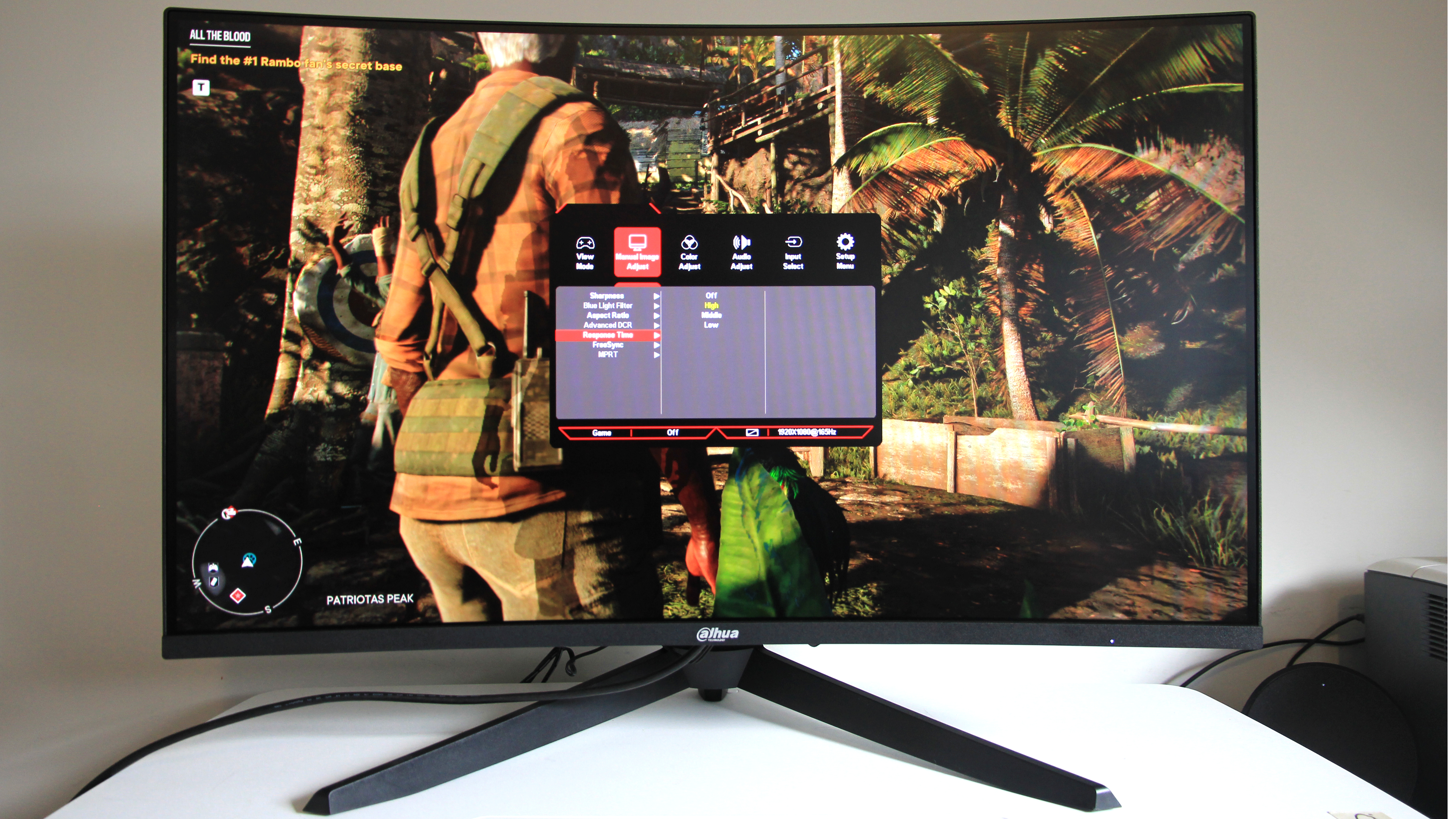
Buy it if...
There’s no other option for a 32-inch 1080p curved screen
All top-brand, similarly-specified monitors are better than this, but in this age of supply-chain shortages there's a chance this may be your only option.
You don’t mind fiddling with menu options
Some people never touch their OSD settings while others are fine with frequent tinkering. This will suit the latter.
You’re not fussed about fast-and-frantic gaming
Not all gamers engage their twitch reflexes whenever they look at the screen. If you’re more of an RTS fan, then any ghosting issues are less pronounced.
Don't buy it if...
You want bright and vibrant colours
The Dahua LM32-E200C only supports 250-nit brightness and colours are muted. Multimedia looks better elsewhere.
You want people to notice your gaming monitor
We’ve become used to stylish, well-built monitors with numerous design flourishes. Beyond some thin RGB strips at the rear, there’s little that’s remarkable about this.
You want pin-sharp, fast gaming performance
The 165Hz refresh rate can make motion smooth, but detail gets lost due to a slower-than-usual pixel response time.
from TechRadar - All the latest technology news https://ift.tt/Ierc1lm

No comments:
Post a Comment